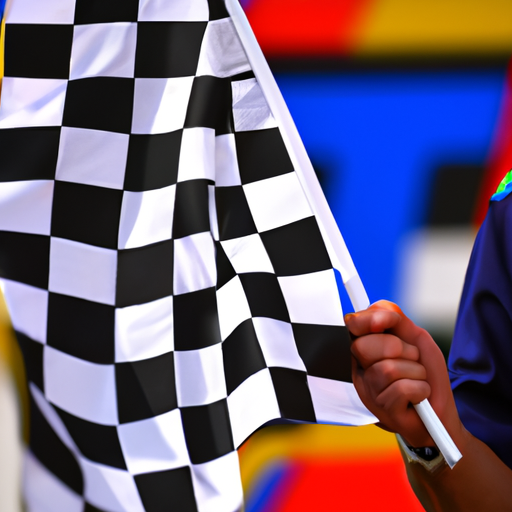What Do the Flags Mean in NASCAR? A Guide to Understanding Racing Signals
Welcome to our comprehensive guide on understanding the meaning of flags in NASCAR races. As a spectator or a new fan of the sport, it is essential to familiarize yourself with the various flags used during races. These flags serve as important signals to both drivers and spectators, providing crucial information about the race conditions and any potential hazards on the track.
Green Flag:
The green flag is the most recognizable flag in NASCAR. It signifies the start of the race or the resumption of racing after a caution period. When the green flag is waved, drivers accelerate and begin racing at full speed.
Yellow Flag:
The yellow flag, also known as the caution flag, indicates a hazard or an incident on the track. When the yellow flag is displayed, drivers must slow down, maintain their positions, and refrain from passing other cars. This flag is usually accompanied by a safety car on the track.
Red Flag:
The red flag is used to halt the race temporarily. It is typically displayed when there is a severe accident, adverse weather conditions, or track obstructions that make it unsafe to continue racing. When the red flag is shown, all cars must come to a complete stop on the track.
White Flag:
The white flag signifies the final lap of the race. It is waved to indicate that there is only one lap remaining before the checkered flag is shown. This flag often adds excitement and anticipation as drivers make their final push for victory.
Checkered Flag:
The checkered flag is the most coveted flag in NASCAR. It is waved to signal the end of the race. The first driver to cross the finish line when the checkered flag is displayed is declared the winner. This flag is synonymous with victory and is accompanied by celebrations and accolades.
Black Flag:
The black flag is used as a disciplinary measure during a race. It is shown to a specific driver to indicate a penalty or a violation of the rules. When a driver receives a black flag, they must immediately enter the pit lane for a penalty or to address a mechanical issue.
Blue Flag:
The blue flag is shown to lapped cars to inform them that faster cars are approaching from behind. Lapped cars are expected to yield to the faster cars and allow them to pass without impeding their progress.
Conclusion:
Understanding the meaning of flags in NASCAR is crucial for both drivers and spectators. These flags serve as important signals that communicate race conditions, hazards, and penalties. By familiarizing yourself with these flags, you can enhance your overall NASCAR experience and gain a deeper appreciation for the sport.
Remember, whether you’re watching a race from the stands or on television, pay close attention to the flags being displayed. They provide valuable insights into the dynamics of the race and can help you better understand the strategies employed by the drivers.
So, the next time you tune in to a NASCAR race, keep an eye out for the green, yellow, red, white, checkered, black, and blue flags, and let the excitement of the race unfold before your eyes!




